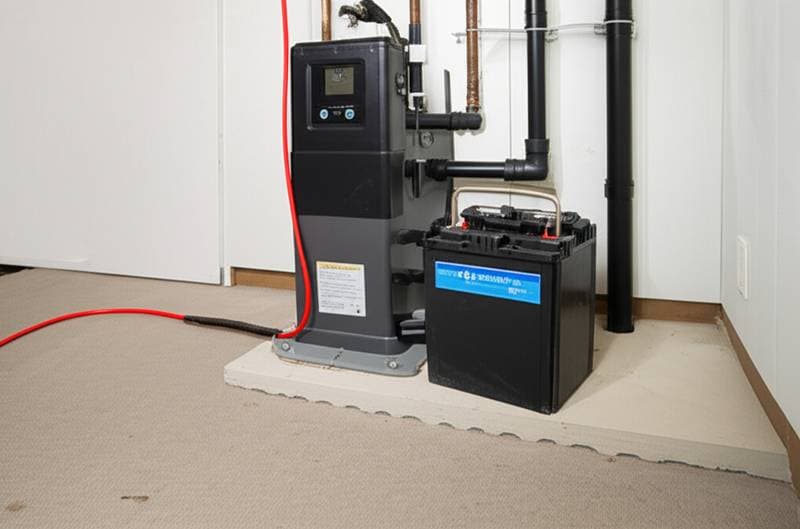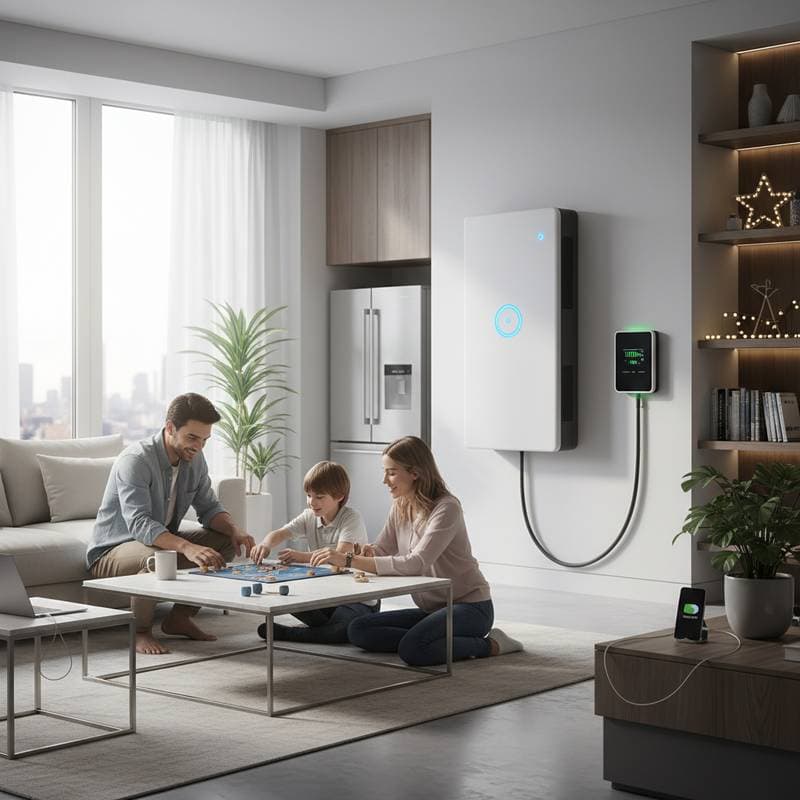Battery Backup Sump Pumps: Your Defense Against Basement Flooding
Basement flooding poses a significant threat to homeowners, especially during heavy rains when power outages disable primary sump pumps. Water intrusion can damage structures, ruin belongings, and lead to costly repairs. Battery backup sump pumps provide a reliable secondary system that activates automatically, ensuring continuous operation and keeping your basement dry.
These devices integrate with existing sump pump setups, switching to battery power when electricity fails. Homeowners in flood-prone areas benefit most from this technology, as it offers peace of mind during storms. Understanding their role helps in selecting the ideal model for specific needs.
How Battery Backup Sump Pumps Function
A standard sump pump removes water collected in a basement pit, but it relies on household electricity. During outages, which often coincide with severe weather, the pump stops, allowing water to accumulate. Battery backup systems address this vulnerability by storing energy in rechargeable batteries, typically deep-cycle marine or AGM types designed for heavy discharge.
When the primary pump loses power, a controller detects the failure and engages the backup. The backup pump, often a smaller secondary unit or the same pump powered differently, draws from the battery to continue water expulsion. Some advanced models include alarms that alert homeowners to low battery levels or activation events.
Charging occurs automatically when power returns, with most systems fully recharging in 24 to 48 hours. Runtime varies by battery capacity and water inflow rate, but quality units handle several hours of operation, sufficient for most outage durations.
Top Battery Backup Sump Pumps for 2025
Selecting a top-rated model involves evaluating capacity, runtime, and features like smart monitoring. Here are standout options based on performance, durability, and user feedback.
Zoeller Aquanot 508
This system features a 1/2 horsepower pump with a vertical float switch for reliable activation. It supports up to 33 gallons per minute at zero feet of lift, ideal for moderate flooding. The controller includes a backup pump switchover and runs diagnostics to prevent failures.
Battery life extends up to 5.5 hours under full load with a 75 amp-hour battery. Installation proves straightforward, and the unit withstands harsh conditions with corrosion-resistant components.
Liberty Pumps SJ10
Designed for high-volume needs, the SJ10 delivers 29 gallons per minute. Its patented sensor technology eliminates mechanical floats, reducing clog risks from debris. The system alarms for power loss or high water levels.
With a robust 12-volt battery setup, it operates continuously for over 7 hours during moderate use. Homeowners appreciate the quiet operation and five-year warranty.
Wayne CDU800
A versatile choice, the CDU800 combines a primary and backup pump in one unit, pumping 5,400 gallons per hour. Vertical pressure switches ensure consistent performance. It includes a battery charger that maintains optimal levels.
Runtime reaches 6 to 8 hours, depending on conditions. The cast-iron construction enhances longevity in damp environments.
Basement Watchdog BWSP
This model stands out for its dual-float design and Wi-Fi connectivity, allowing remote monitoring via an app. It handles 2,600 gallons per hour and includes a backup pump that activates if the primary fails.
Batteries provide 7 to 10 hours of runtime, with automatic charging and low-battery alerts. The system suits tech-savvy users seeking proactive flood prevention.
Key Factors in Choosing a Battery Backup Pump
Assess your home's water table and rainfall patterns to determine required capacity. Pumps rated for higher gallons per hour suit areas with frequent heavy downpours. Consider lift height, as deeper discharges demand more power.
Battery type matters; sealed lead-acid batteries offer affordability, while lithium-ion provides longer life and lighter weight. Check for additional features like audible alarms or automatic battery testing.
Compatibility with existing systems ensures seamless integration. Review warranties, typically two to five years, and prioritize brands with strong customer support.
Essential Maintenance for Optimal Performance
Regular upkeep extends the life of your battery backup system and prevents unexpected failures. Inspect the battery monthly, cleaning terminals to avoid corrosion. Test the system quarterly by simulating a power outage to confirm activation and runtime.
Clean the sump pit and pump intake screens to prevent debris buildup, which can impede flow. Replace batteries every three to five years, or sooner if capacity drops below 80 percent.
Store spare batteries in a cool, dry place if not in use. Annual professional inspections catch issues early, ensuring reliability during critical times.
Installation Options: DIY Versus Professional
DIY installation appeals to handy homeowners with basic plumbing knowledge. Most kits include detailed instructions and require connecting the battery, wiring the controller, and securing the pump in the sump basin. Tools needed include a wrench, screwdriver, and possibly a drill.
However, electrical work demands caution to avoid shocks or code violations. Professional installation, costing 300 to 800 dollars, guarantees proper setup, especially for complex homes or integrated smart systems.
Weigh time, skill level, and local regulations. If unsure, consult a licensed plumber to ensure safety and efficiency.
Affordable Paths to Basement Protection
Budget-conscious options start at 200 dollars for basic kits like the Superior Pump 92900, which offers solid performance without extras. Mid-range models around 400 dollars, such as the Rule LoPro, provide extended runtime and easy access.
Pair a quality pump with an affordable 75 amp-hour battery for under 500 dollars total. Look for bundle deals that include installation hardware.
Long-term savings from prevented flood damage outweigh initial costs. Invest in reputable brands to avoid frequent replacements.
Securing Lasting Basement Safety
Battery backup sump pumps transform vulnerability into resilience, protecting your home's foundation and valuables year-round. By choosing the right model, maintaining diligently, and installing correctly, you minimize flood risks effectively.
These systems deliver quiet, dependable operation, freeing you to focus on enjoyment rather than worry. Embrace this essential upgrade for a drier, safer living space.



